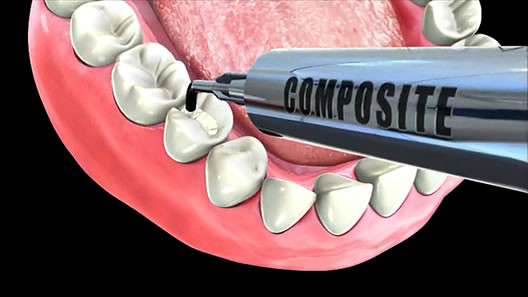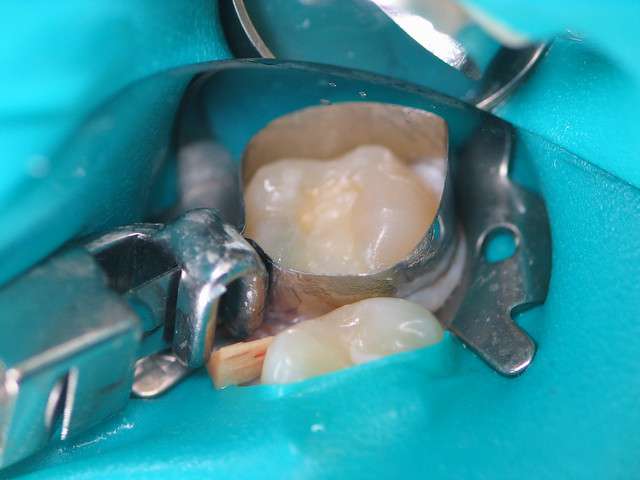
Color change is a major concern when working with these composite resins and has become one of the major reasons for replacing restorations over time. Image Source: Flickr’ user Azure Dental
Last weekend we attended an epic barbeque, complete with food, drinks, and outdoor recreation which included a 100-foot giant slip n’ slide. Although the highlight of the afternoon was our group volleyball game of husbands vs. wives. I am happy to say that it was a fairly competitive game and we ended up two for two by the end of the evening. However, although I love playing volleyball, stepping out onto the court instantly brought back PTSD symptoms of my middle school years. Let just say that during my early playing days, the gym floor and I got a little too personal and met face to face. The floor won and I ended up with two little stubs of front teeth to show for it. The evidence is still visible today and each time I smile I am a little self-conscious of the color difference between my natural teeth and the composite material. Apparently dental technology was not up to par 20 years ago and the color stability of dental composite resin often deteriorated over time. Dental composites today are much more advanced and color measurement technology ensures that tooth color resins meet quality standards for appearance and longevity.

Composite resins must be carefully analyzed to ensure accurate color matching, longevity, and stability. Image Source: Flickr’ user Ida Aguilar D.D.S.



